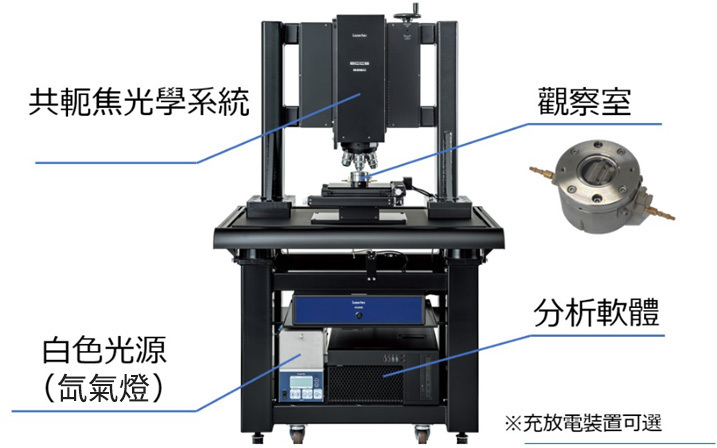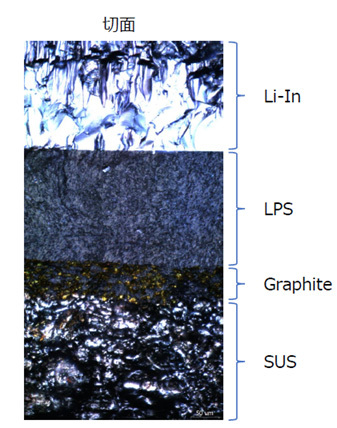
▌Equipment : In situ Confocal OM
Confocal Laser Scanning Microscopy (CLSM) differs significantly from conventional microscopy in that it possesses the capability to control focal depth. Unlike regular optical microscopes with limited focal depth that can only observe surface sample structures, CLSM can adjust the depth of the focal plane, enabling the observation of details at different depths within a sample. This is particularly helpful for the three-dimensional structural analysis of batteries.
CLSM can eliminate scattered light from deep within a sample, enhancing image contrast and clarity, thus improving observations of minute structures. It is utilized to observe dynamic behaviors during battery charging and discharging processes, track microscopic structural changes in electrode materials, evaluate the interface properties between solid electrolytes and electrodes, and study the lifespan and performance of batteries. The high resolution and three-dimensional imaging capability of CLSM make it a powerful tool for researchers to gain profound insights, contributing to the advancement of battery technology and increased energy storage efficiency.
The integration with a potentiostat makes confocal laser scanning microscopy a direct tool for battery research, enabling NTUST students, researchers, and collaborating partners to better understand the internal structures and reaction behaviors of batteries during charging and discharging.

▲Visualization of electrochemical reactions using a confocal laser optical system, image courtesy of Lasertech.
▼Observation room (battery) manufacturing process, image courtesy of Lasertech.


▲Presentation of images of an all-solid-state battery, showcasing dynamic visuals through charging and discharging cycles, image courtesy of Lasertech.




